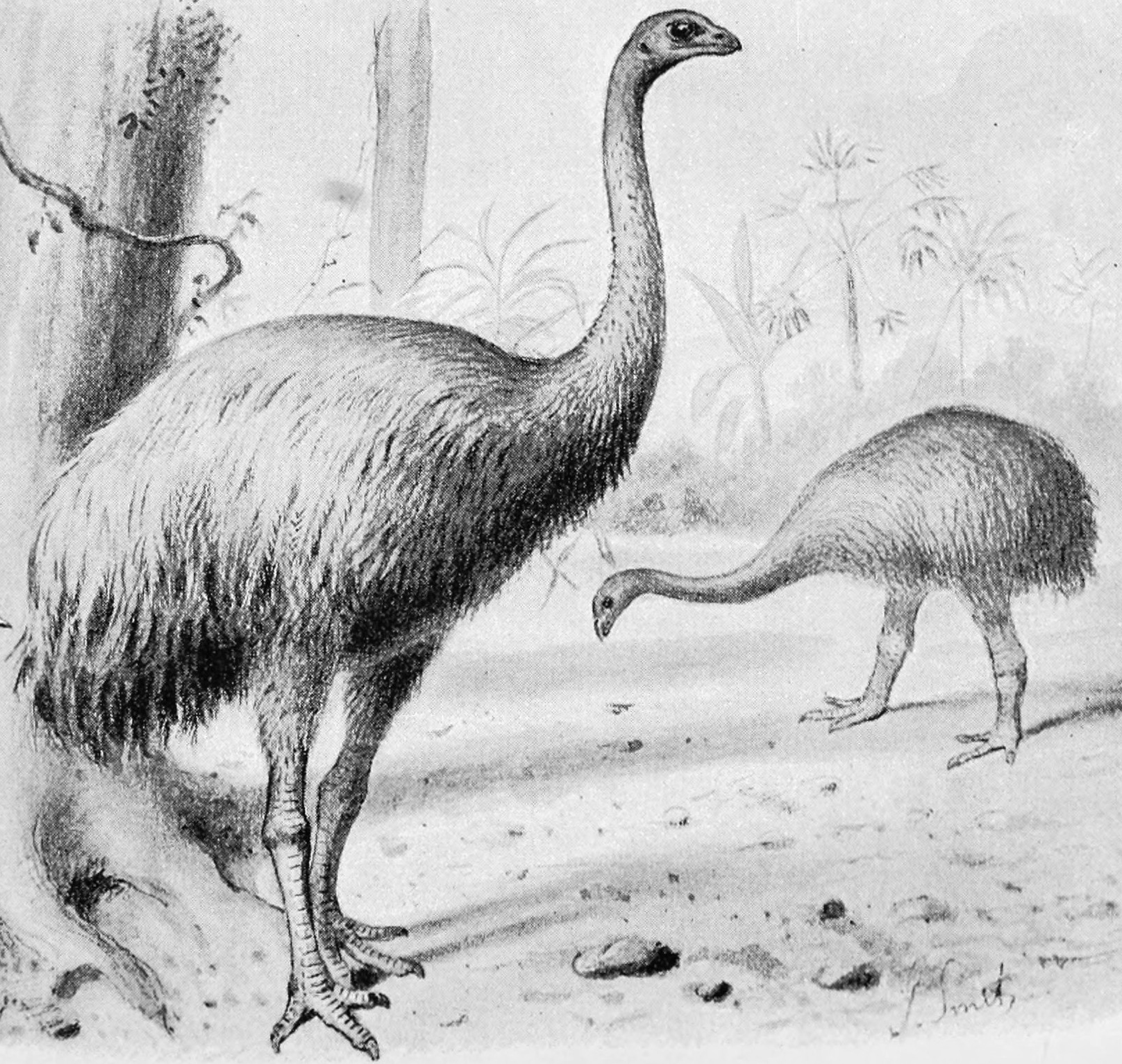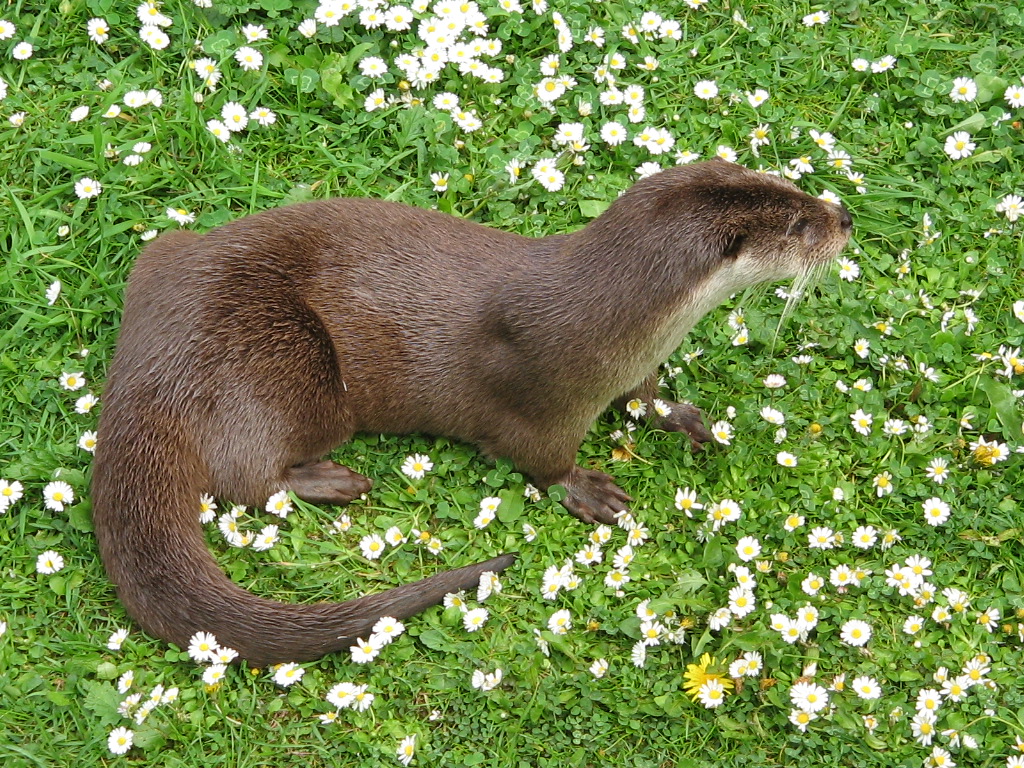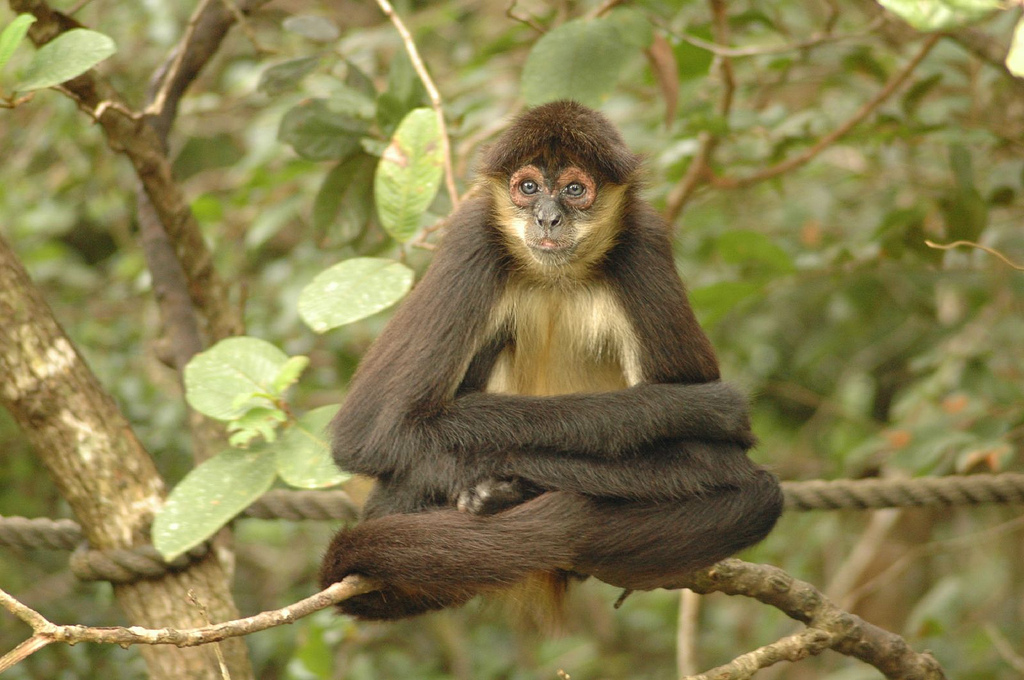|
Juréia-Itatins Ecological Station
The Jureia-Itatins Ecological Station () is an ecological station (ESEC) in the state of São Paulo, Brazil. It fully protects a well-preserved area of Atlantic Forest and associated ecosystems along the coastal plain and mountains of the south of the state, home to endangered species of mammals and birds. There is however, some threat from illegal gathering of heart of palm. Location The Jureia-Itatins Ecological Station (ESEC) is divided between the municipalities of Iguape (86.43%), Itariri (3.62%), Miracatu (5.59%), Peruíbe (4.19%) and Pedro de Toledo (0.17%) in the state of São Paulo. It covers an area of . The ESEC covers part of the coastal plain and mountains between Ilha Comprida to the southwest and Peruíbe to the east. It is east of the SP-322 highway and south of the BR-116 - BR-101 highway. The Despraiado Sustainable Development Reserve extends into the northwest part of the ESEC. The Prelado State Park on the coast adjoins the south part of the ESEC. The ... [...More Info...] [...Related Items...] OR: [Wikipedia] [Google] [Baidu] |
Iguape
Iguape is a municipality located into the Ribeira Valley in the southern portion of the state of São Paulo (state), São Paulo, Brazil. The population is 30,989 (2020 estimate) in an area of , making it the largest municipality area in São Paulo state. The city was officially founded on December 3, 1538, and its historic constructions are classified as national heritage by the National Institute of Historic and Artistic Heritage, IPHAN since 2009. Its name has Tupi language, tupi origins and its translation means "in the river cove", '''y'' (water/river), ''kûá'' (cove) and ''pe'' (in). History The extinct unclassified Jaguanan language was formerly spoken by indigenous peoples in Iguape. Because of its location, close to the limits established by the Tordesillas Treaty, the Iguape region was the stage for constant disputes among Portuguese, Spanish, and French pirates who landed there in order to refill their vessels or to trade in their goods. The foundation of Iguape is ... [...More Info...] [...Related Items...] OR: [Wikipedia] [Google] [Baidu] |
Serra Da Juréia
The Jureia Massif () is an isolated group of mountains on the coast of the state of São Paulo, Brazil. The mountains hold a well-preserved remnant of Atlantic Forest, and are contained in the fully protected Jureia-Itatins Ecological Station. Location The name "Jureia" means prominent point in the Tupi-Guaraní language. The Serra da Jureia is a Precambrian horst on the coast of the municipality of Iguape in the south of São Paulo state. The massif covers and rises to . The eastern side falls steeply to the ocean. It is an inselberg connected to the mainland by a sandy alluvial plain that was formed 5100 years ago during the post-glacial Cananéia Transgression, when the sea was about higher than at present. The Paranapu massif, part of the Serra dos Itatins, rises from the plain to the north. Hydrology The streams formed in the Serra da Jureia are clear, with a pH of 5–6.5, and are low in nutrients. A few originate in springs in the ''campo'', but most are rain-fed and ... [...More Info...] [...Related Items...] OR: [Wikipedia] [Google] [Baidu] |
Banhados De Iguape Ecological Station
The Banhados de Iguape Ecological Station () is an ecological station in the state of São Paulo, Brazil. It protects an area of mangrove swamp. Since 2013 it has been administered as part of the Juréia-Itatins Ecological Station. Location The Banhados de Iguape Ecological Station (ESEC) covers an area of of mangrove swamp in southern São Paulo Visits are only allowed for environmental education and for scientific research. The ESEC consists of the Banhado Grande and Banhado Pequeno areas, which contain several endangered and endemic species. The two areas are important parts of the region of the Serra do Bananal, Serra dos Itatins and Juréia Massif. These contain an extensive area of Atlantic Forest and associated ecosystems in the south-central coast of SP. History The Banhados de Iguape Ecological Station has its origins in the Itatins State Reserve (''Reserva Estadual dos Itatins'') created in 1958. In 1984 the area was included in the Cananéia-Iguape-Peruíbe Envi ... [...More Info...] [...Related Items...] OR: [Wikipedia] [Google] [Baidu] |
André Franco Montoro
André Franco Montoro (; 14 July 1916 – 16 July 1999) was a Brazilian politician and lawyer. He was born in São Paulo as the son of André de Blois Montoro and Tomásia Alijostes. He was a senator and governor of São Paulo, winning against São Paulo mayor Reynaldo de Barros in the latter. He was a member of several parties, such as PDC, MDB, PMDB and one of the founders of PSDB. He was also a law philosopher and a professor at PUC-SP, who wrote several law books. Montoro is credited as being one of the key figures in the Diretas Já movement, along with Tancredo Neves and Ulysses Guimarães, which helped to bring about the return of direct elections to Brazil. The São Paulo/Guarulhos International Airport The São Paulo/Guarulhos–Governor André Franco Montoro International Airport , commonly known as São Paulo/Guarulhos International Airport, is the primary international airport serving São Paulo, located in the municipality of Guarulhos, i ... is named a ... [...More Info...] [...Related Items...] OR: [Wikipedia] [Google] [Baidu] |
Entrada Da Estação Ecológica Da Juréia
Entrada is a Spanish or Portuguese word meaning ''entry'' and may refer to: *Entrada Sandstone, a geological formation spread across Wyoming, Colorado, New Mexico, Arizona and Utah *Entradas, a town in Castro Verde, Portugal *La Entrada, a town in Honduras *La Entrada al Pacífico La Entrada al Pacífico is a trade corridor designated as "Trade Corridor 56" by the Intermodal Surface Transportation Efficiency Act. The corridor is an international project between Mexico and the United States as a route from the Pacific Ocean ..., a trade corridor between Mexico and the United States * "Entrada" (''Fringe''), an episode of the television series ''Fringe'' * Entrada Travel Group, New Zealand travel company {{disambiguation, geo ... [...More Info...] [...Related Items...] OR: [Wikipedia] [Google] [Baidu] |
Illegal Logging
Illegal logging is the harvest, transportation, purchase, or sale of timber in violation of laws. The harvesting procedure itself may be illegal, including using corrupt means to gain access to forests; extraction without permission, or from a protected area; the cutting down of protected species; or the extraction of timber in excess of agreed limits. Illegal logging is a driving force for a number of environmental issues such as deforestation, soil erosion and biodiversity loss which can drive larger-scale environmental crises such as climate change and other forms of environmental degradation. Illegality may also occur during transport, such as illegal processing and export (through smuggling, fraudulent declaration to customs); the tax avoidance, avoidance of taxes and other charges, and fraudulent certification. These acts are often referred to as "wood laundering". Illegal logging is driven by a number of economic forces, such as demand for raw materials, land grabbing and ... [...More Info...] [...Related Items...] OR: [Wikipedia] [Google] [Baidu] |
Heart Of Palm
Heart of palm is a vegetable harvested from the inner core and growing bud of certain Palm tree, palm trees, most notably the coconut (''Cocos nucifera''), juçara (''Euterpe edulis''), açaí palm (''Euterpe oleracea''), sabal, palmetto (''Sabal'' spp.), and Bactris gasipaes, peach palm. Heart of palm may be eaten on its own, and often it is eaten in a salad. There are palm varieties that have become domesticated farm species as an alternative to sourcing from wild palms. The main variety that has been domesticated is ''Bactris gasipaes'', known in English as peach palm. This variety is the most widely used for canning. Peach palms are self-Sucker (botany), suckering and produce multiple Plant stem, stems, with up to 40 on one plant. This lets producers lower costs by harvesting several stems from a plant while avoiding the death of the palm. Another advantage is that the peach palm has been selectively bred to eliminate the thorns of its wild cousins. Since harvesting is still ... [...More Info...] [...Related Items...] OR: [Wikipedia] [Google] [Baidu] |
Tinamou
Tinamous () are members of the order Tinamiformes (), and family Tinamidae (), divided into two distinct subfamily, subfamilies, containing 46 species found in Mexico, Central America, and South America. The word "tinamou" comes from the Carib language, Galibi term for these birds, ''tinamu''. Tinamous are the only living group of Palaeognathae, palaeognaths able to fly, and were traditionally regarded as the sister group of the flightless ratites, but recent work places them well within the ratite radiation as most closely related to the extinct moa of New Zealand, implying flightlessness emerged among ratites multiple times. Tinamous first appear in the fossil record in the Miocene epoch. They are generally sedentary, ground-dwelling and, though not flightless, when possible avoid flight in favour of hiding or running away from danger. They are found in a variety of habitats, ranging from semi-arid climate, semi-arid alpine climate, alpine grasslands to tropical rainforests. The ... [...More Info...] [...Related Items...] OR: [Wikipedia] [Google] [Baidu] |
Capybara
The capybara or greater capybara (''Hydrochoerus hydrochaeris'') is the largest living rodent, native to South America. It is a member of the genus '' Hydrochoerus''. The only other extant member is the lesser capybara (''Hydrochoerus isthmius''). Its close relatives include guinea pigs and rock cavies, and it is more distantly related to the agouti, the chinchilla, and the nutria. The capybara inhabits savannas and dense forests, and lives near bodies of water. It is a highly social species and can be found in groups as large as one hundred individuals, but usually live in groups of 10–20 individuals. The capybara is hunted for its meat and hide and also for grease from its thick fatty skin. Etymology Its common name is derived from Tupi , a complex agglutination of (leaf) + (slender) + (eat) + (a suffix for agent nouns), meaning "one who eats slender leaves", or "grass-eater". The genus name, ''hydrochoerus'', comes from Greek (' "water") and (' "pig, hog") an ... [...More Info...] [...Related Items...] OR: [Wikipedia] [Google] [Baidu] |
Otter
Otters are carnivorous mammals in the subfamily Lutrinae. The 13 extant otter species are all semiaquatic, aquatic, or marine. Lutrinae is a branch of the Mustelidae family, which includes weasels, badgers, mink, and wolverines, among other animals. Otters' habitats include dens known as holts or couches, with their social structure described by terms such as dogs or boars for males, bitches or sows for females, and pups or cubs for offspring. Groups of otters can be referred to as a bevy, family, lodge, romp, or raft when in water, indicating their social and playful characteristics. Otters are known for their distinct feces, termed spraints, which can vary in smell from freshly mown hay to putrefied fish. Otters exhibit a varied life cycle with a gestation period of about 60–86 days, and offspring typically stay with their family for a year. They can live up to 16 years, with their diet mainly consisting of fish and sometimes frogs, birds, or shellfish, depending ... [...More Info...] [...Related Items...] OR: [Wikipedia] [Google] [Baidu] |
Jaguar
The jaguar (''Panthera onca'') is a large felidae, cat species and the only extant taxon, living member of the genus ''Panthera'' that is native to the Americas. With a body length of up to and a weight of up to , it is the biggest cat species in the Americas and the List of largest cats, third largest in the world. Its distinctively marked Animal coat, coat features pale yellow to tan colored fur covered by spots that transition to Rosette (zoology), rosettes on the sides, although a melanistic black coat appears in some individuals. The jaguar's powerful bite allows it to pierce the Turtle shell#Carapace, carapaces of turtles and tortoises, and to employ an unusual killing method: it bites directly through the skull of mammalian prey between the ears to deliver a fatal blow to the brain. The modern jaguar's ancestors probably entered the Americas from Eurasia during the Early Pleistocene via the land bridge that once spanned the Bering Strait. Today, the jaguar's range ex ... [...More Info...] [...Related Items...] OR: [Wikipedia] [Google] [Baidu] |
Spider Monkey
Spider monkeys are New World monkeys belonging to the genus ''Ateles'', part of the subfamily Atelinae, family Atelidae. Like other atelines, they are found in tropical forests of Central and South America, from southern Mexico to Brazil. The genus consists of seven species, all of which are under threat; the brown spider monkey is critically endangered. They are also notable for their ability to be easily Monkey breeding, bred in captivity. Disproportionately long limbs and long prehensile tails make them one of the largest New World monkeys and give rise to their common name. Spider monkeys live in the upper layers of the rainforest and forage in the high canopy, from . They primarily eat fruits, but will also occasionally consume leaves, flowers, and insects. Due to their large size, spider monkeys require large tracts of moist evergreen forests, and prefer undisturbed primary rainforest. They are social animals and live in bands of up to 35 individuals, but will split up to ... [...More Info...] [...Related Items...] OR: [Wikipedia] [Google] [Baidu] |





